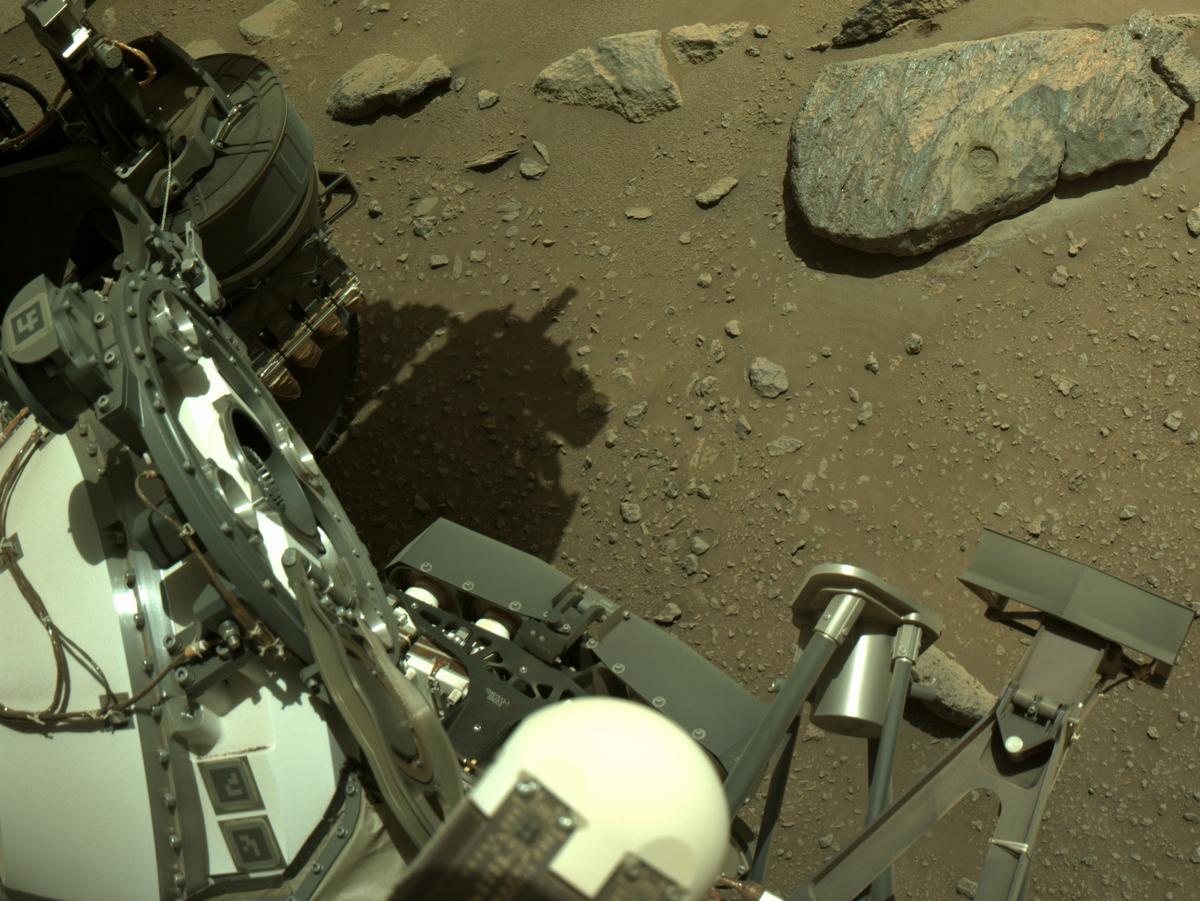3 min read

This week in Jezero crater, Perseverance is hard at work carrying out sampling-related activities at the Citadelle location. On Earth, preparing for sampling is a massive undertaking and involves careful coordination across all instrument teams, scientists, and engineers; it’s a huge team effort!
As a member of the science operations team, I’ve been involved in the development of Perseverance’s sampling strategy – an effort that has been ongoing since before Perseverance landed on Mars! We’ve been developing what we refer to as the “sampling sol path,” which outlines the standardized sequence of events that we plan to carry out at each sampling location. A “sol” is a martian day, so “sol path” refers to the rover’s activities over the course of a few sols. In the case of the sampling sol path, we’re referring to all of the activities related to a sampling event, a process that takes over a week to complete on Mars. Our sampling sol path includes the following key milestones:
- Drive up to the intended sampling location.
- Perform reconnaissance observations with our scientific instruments and cameras.
- Use the drill to grind away the upper centimeter of the rock surface, creating an abrasion patch.
- Analyze the fresh rock surface inside the abrasion patch with our science instruments.
- Select a nearby rock target for coring.
- Use the drill to extract a core sample from the rock.
- Deliver the core (inside its sample tube) to the belly of the rover, where it goes through a complex sequence of sample assessment, imaging, hermetic sealing, and eventual storage.
- Wrap up our scientific observations at the sampling location including analysis of the newly drilled borehole.
- Drive away from our sampling site, one core sample heavier.
The sampling sol path is all about efficiency. There are a lot of activities crammed into the sol path, and the goal is to organize the path into a logical sequence that maximizes rover resources. The sol path also enables us to acquire a standard and comparable set of scientific observations so that we can consistently document each sample that we collect. Last week, our arrival at Citadelle marked the initiation of our sampling sol path. At the time of this writing, we’ve successfully created an abrasion patch on our intended rock target “Rochette,” seen in the image above. We’re well on our way towards sampling, and if all goes well over the next few sols, we’ll proceed with sample coring. Go Perseverance!
Written by Rachel Kronyak, Systems Engineer at NASA's Jet Propulsion Laboratory







